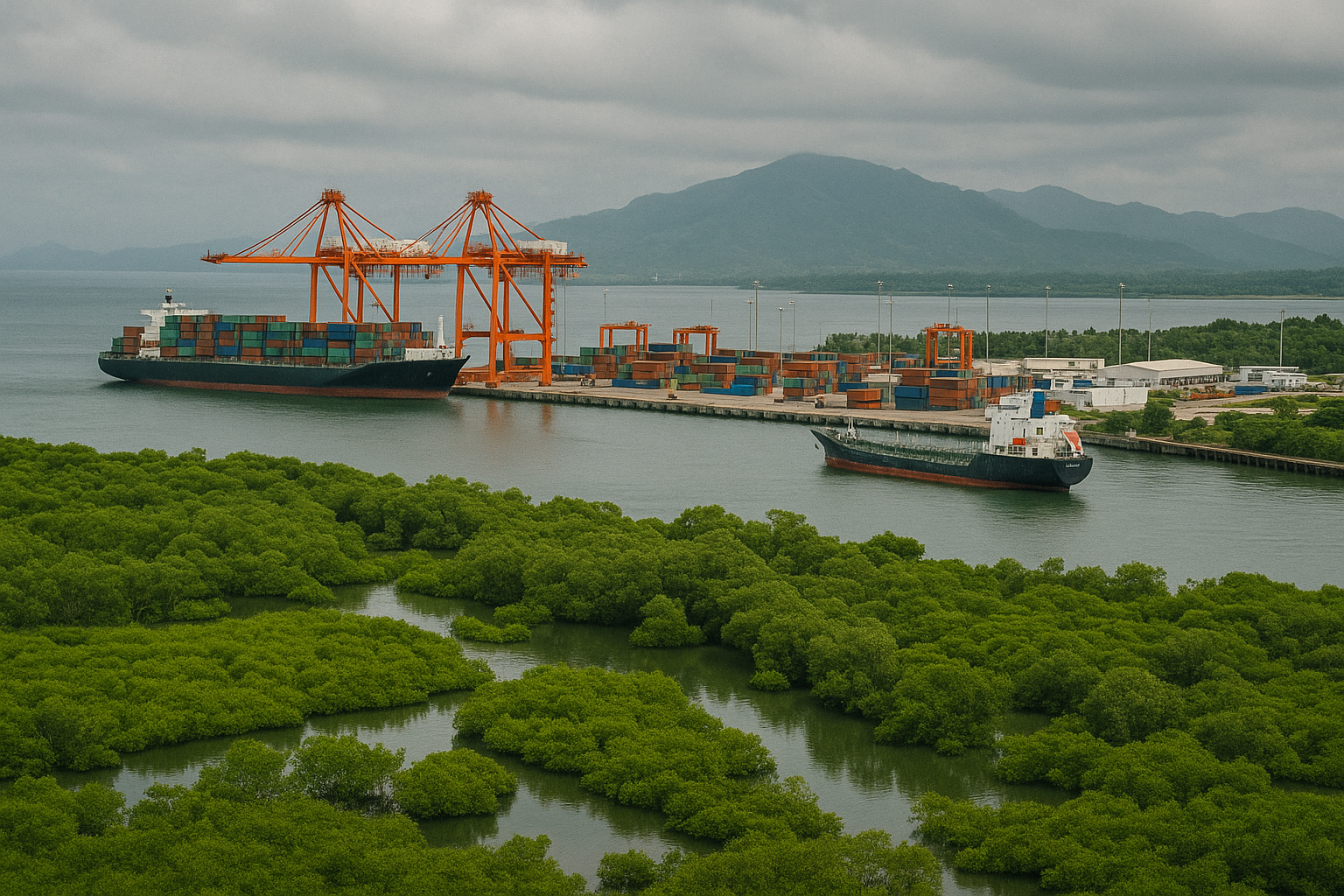Greening the Waterfront: How Nature-Based Solutions Are Transforming Port Planning
The World Bank’s 2025 report highlights how nature-based solutions (NBS) can enhance port resilience, efficiency, and sustainability by integrating natural processes into infrastructure planning. It categorizes practical NBS strategies and outlines key enablers to support implementation, financing, and stakeholder alignment.

The 2025 World Bank report “Nature-Based Solutions for Ports: An Overview of NBS Implementation in Practice – Opportunities and Challenges”, developed in partnership with leading research institutions such as EcoShape, Deltares, Arcadis, Boskalis, HKV, Royal HaskoningDHV, Van Oord, One Architecture, and the Global Facility for Disaster Reduction and Recovery (GFDRR), calls for a fundamental shift in port planning and management. The report draws on years of pilot projects, system-based research, and consultations with maritime and coastal experts to advocate for integrating nature-based solutions (NBS) as central components of port infrastructure. Rather than relying solely on rigid, traditional grey infrastructure, the document emphasizes the power of ecosystems, mangroves, dunes, reefs, salt marshes, and sediment processes to reduce operational risks, enhance climate resilience, and unlock new environmental and economic value.
Four Families of Solutions for Modern Port Challenges
The report identifies four strategic NBS “families” designed to tackle the five most common governance and operational challenges that ports face today: development constraints, climate risks, performance inefficiencies, asset maintenance burdens, and stakeholder relations. The first family, Working with Coastal Systems, encourages ports to align infrastructure with natural geomorphological and hydrodynamic processes. For instance, at Lekki Port in Nigeria and Lome Port in Togo, sandbar breakwaters were designed to trap natural sediment flows, reduce material needs, and protect coastlines more sustainably. The second family, Wave and Coastal Dynamics Attenuation, promotes using vegetated foreshores, mangroves, reefs, and salt marshes to absorb wave energy. Jakarta Fishing Port offers a real-world case where reforested mangroves now serve as a protective buffer and enhance operability. The third family, the Beneficial Reuse of Dredged Sediments, transforms dredging waste into an asset by using it to build wetlands, reclaim land, and fortify coastlines. The Horseshoe Bend Island in the U.S. is a notable case where dredged material was used to form a wetland that improved navigation and environmental quality. Finally, Enhancing Hard Structures focuses on retrofitting existing infrastructure, like quay walls, with textured, ecologically supportive features. At the Port of Vigo in Spain, specialized concrete elements were used to foster marine biodiversity while maintaining structural performance.
Enablers That Turn Concepts into Action
Beyond introducing the families of solutions, the report outlines six critical enablers that make NBS successful: technology and system knowledge, continuous management and monitoring, strong business cases, institutional embedding, stakeholder engagement, and capacity development. These enablers are not just supportive tools but integral to the long-term viability of NBS. Adaptive management, for example, is crucial because ecosystems change over time and must be actively maintained. Monitoring protocols and flexible operational frameworks help ports respond effectively to variables such as erosion, sediment shifts, and sea-level rise. Institutional embedding is also emphasized, ensuring NBS are reflected in port master plans, environmental permits, concession agreements, and national policy instruments. Stakeholder inclusion is framed as essential, not optional, with local communities, environmental groups, and port users all playing a part in co-design and acceptance. Training and education are needed across all sectors, including engineers, policymakers, financiers, and civil society, to create a workforce and governance structure capable of implementing and scaling nature-based infrastructure.
Making NBS Bankable and Investment-Ready
A standout feature of the report is its attention to the economics of NBS. Financing is a common barrier, especially in early planning phases, yet the report provides clear pathways to make NBS financially viable. It advocates for embedding NBS into broader, revenue-generating infrastructure projects, thereby linking natural functions to commercial outcomes. Tools such as carbon credits, habitat banking, blue and green bonds, and value capture mechanisms like tax incentives or user fees are discussed. Risk reduction through insurance, bundling of NBS projects to attract capital, and building investor confidence through successful demonstrations are all seen as essential to scale investment. The report also recommends that ports work with financiers early in project development to align risk-return expectations and to explore performance-based financing models.
Ports as Climate Leaders, Not Just Cargo Gateways
The report urges port authorities and developers to consider NBS not as optional add-ons, but as essential tools for modern, resilient, and sustainable port governance. With real-world case studies, cost-benefit comparisons, visual guides, and a screening checklist for implementation, the document is both an advocacy piece and a practical manual. It acknowledges that not every port setting is suitable for all NBS interventions, but argues convincingly that nature-based approaches should always be explored at the outset of infrastructure planning. Beyond protecting cargo flows, NBS helps ports become better neighbors, reducing pollution, restoring ecosystems, generating livelihoods, and building social capital. In an era of rising seas, tightening regulations, and public scrutiny, NBS position ports not just to survive, but to lead in shaping a climate-resilient maritime economy. This report reframes nature not as a constraint on port development, but as a dynamic partner in shaping the next generation of infrastructure.
- FIRST PUBLISHED IN:
- Devdiscourse
ALSO READ
World Bank Launches $150M Program to Boost Sri Lanka’s clean energy transition
World Bank Approves $500M to Boost Transparency, Governance in Bangladesh
AI for All? World Bank Lays Out Roadmap to Help Developing Nations Catch Up
Kyrgyzstan Secures World Bank Support for Ambitious Reform and Energy Agenda
One Health, Many Risks: World Bank’s Mission to Strengthen Global Health Defenses










